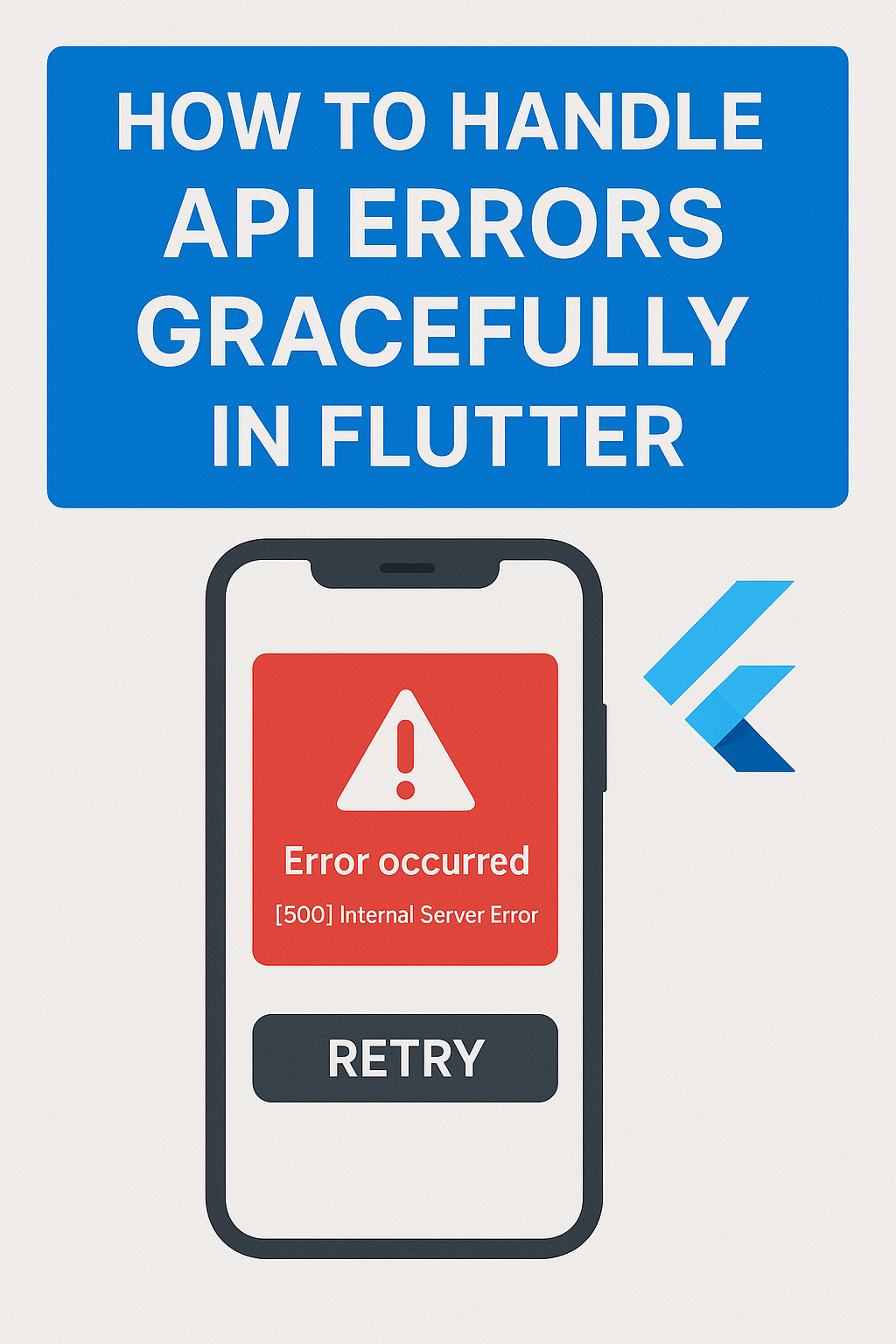
In Flutter apps, especially those that rely heavily on external APIs, handling errors properly isn’t just a backend concern — it’s crucial for a smooth and reliable user experience. Whether it’s a slow network, an expired token, or a server error, your app should respond gracefully, not crash or confuse the user.
In this post, you’ll learn how to handle API errors gracefully in Flutter, using practical examples, and best practices that work with packages like Dio, http, Chopper, and even custom clients.
✅ Why Graceful Error Handling Matters
Poor error handling results in:
- Blank screens or app crashes
- Confusing messages like “Exception: SocketException”
- Loss of trust from users
Graceful handling means:
- Showing clear, helpful messages
- Offering retry options
- Logging issues silently when needed
🚧 Common API Error Types in Flutter
When calling APIs in Flutter, you might face:
- Timeouts
- Network errors (no internet, DNS failures)
- Unauthorized access (401)
- Forbidden access (403)
- Server errors (500)
- Custom business logic errors from the backend
🔁 Basic Example with http Package
import 'package:http/http.dart' as http;
Future<void> fetchData() async {
try {
final response = await http.get(Uri.parse('https://api.example.com/data'));
if (response.statusCode == 200) {
// Success
} else if (response.statusCode == 401) {
throw Exception('Unauthorized – please log in again');
} else {
throw Exception('Something went wrong (${response.statusCode})');
}
} catch (e) {
// Show error to user, log if needed
print('Error: $e');
}
}
🌐 Better Error Handling with Dio
Dio provides built-in error types. Example:
import 'package:dio/dio.dart';
final dio = Dio();
Future<void> fetchUserData() async {
try {
final response = await dio.get('https://api.example.com/user');
// Handle response
} on DioException catch (e) {
switch (e.type) {
case DioExceptionType.connectionTimeout:
print('Connection timed out');
break;
case DioExceptionType.badResponse:
print('Server error: ${e.response?.statusCode}');
break;
default:
print('Unexpected error: ${e.message}');
}
}
}
🧠 Show Error Messages Smartly in the UI
Use a pattern like this with your state management (e.g., BLoC, Riverpod, Provider):
void showErrorSnackbar(BuildContext context, String message) {
ScaffoldMessenger.of(context).showSnackBar(
SnackBar(content: Text(message), backgroundColor: Colors.red),
);
}
🧱 Best Practices for API Error Handling
- Catch errors close to the source – Handle in services, not deep in widgets.
- Use meaningful error messages – Don’t just print exceptions.
- Distinguish between types – Handle network, auth, and validation differently.
- Support retry logic – Use buttons or auto-retry for transient errors.
- Use centralized error reporting – e.g., Firebase Crashlytics or Sentry.
- Abstract error models – Create custom exceptions for consistency.
🛠️ Bonus: Custom Exception Class
class ApiException implements Exception {
final String message;
final int? statusCode;
ApiException(this.message, {this.statusCode});
@override
String toString() => 'ApiException($statusCode): $message';
}
Then use:
throw ApiException('Token expired', statusCode: 401);
📌 Final Thoughts
Handling API errors gracefully in Flutter is not optional — it’s essential for user trust, reliability, and app quality. By implementing structured error handling and giving users meaningful feedback, you’ll take your Flutter app from good to great.



